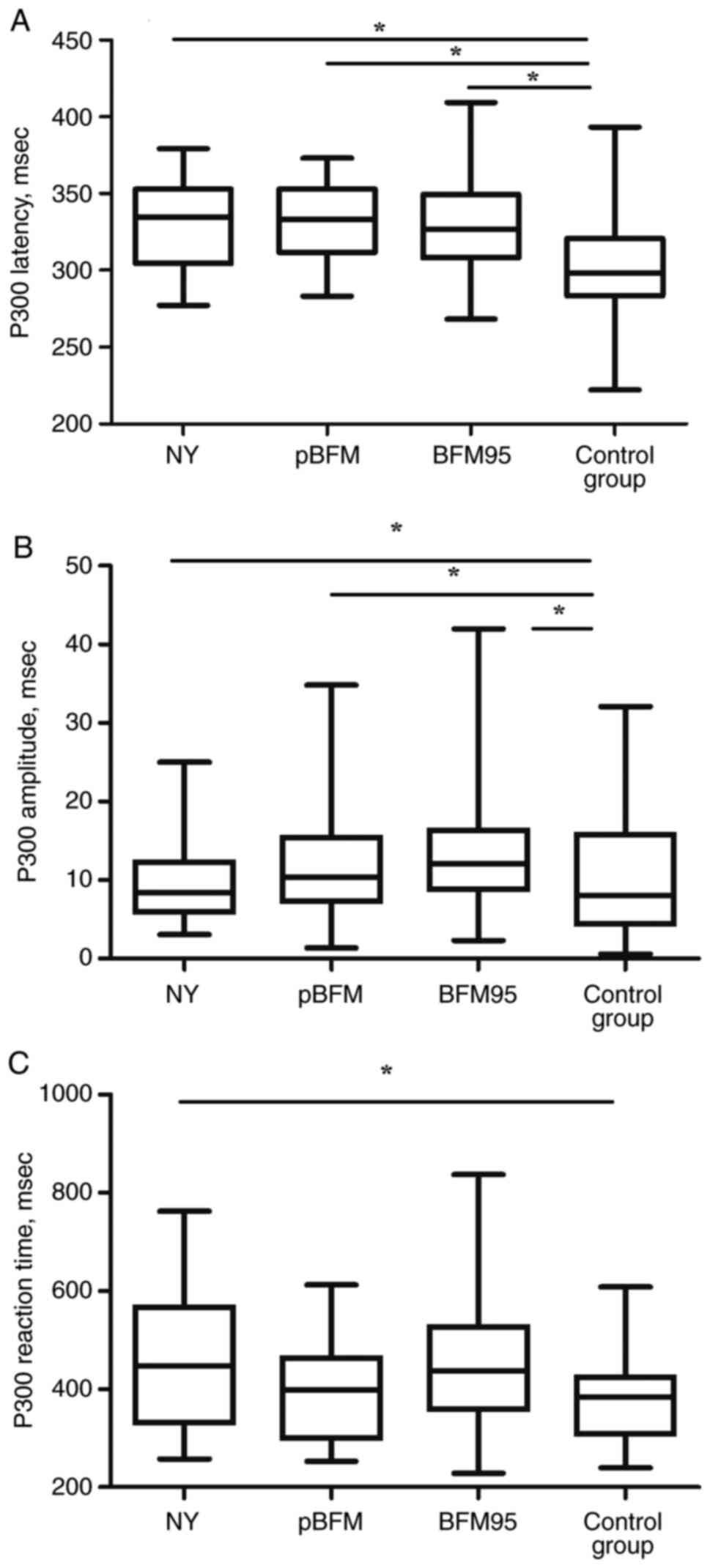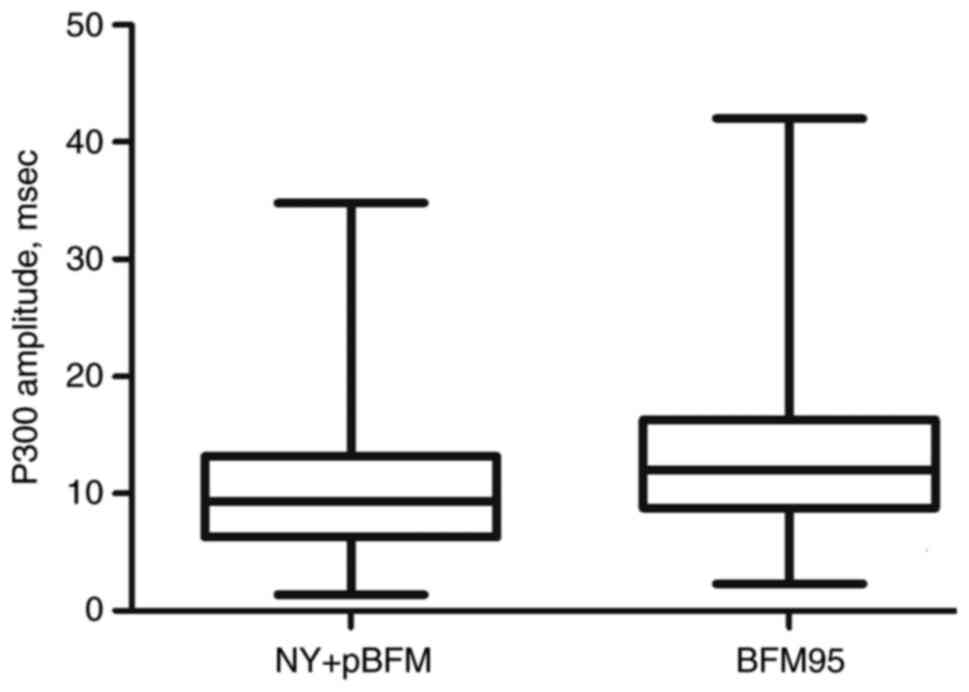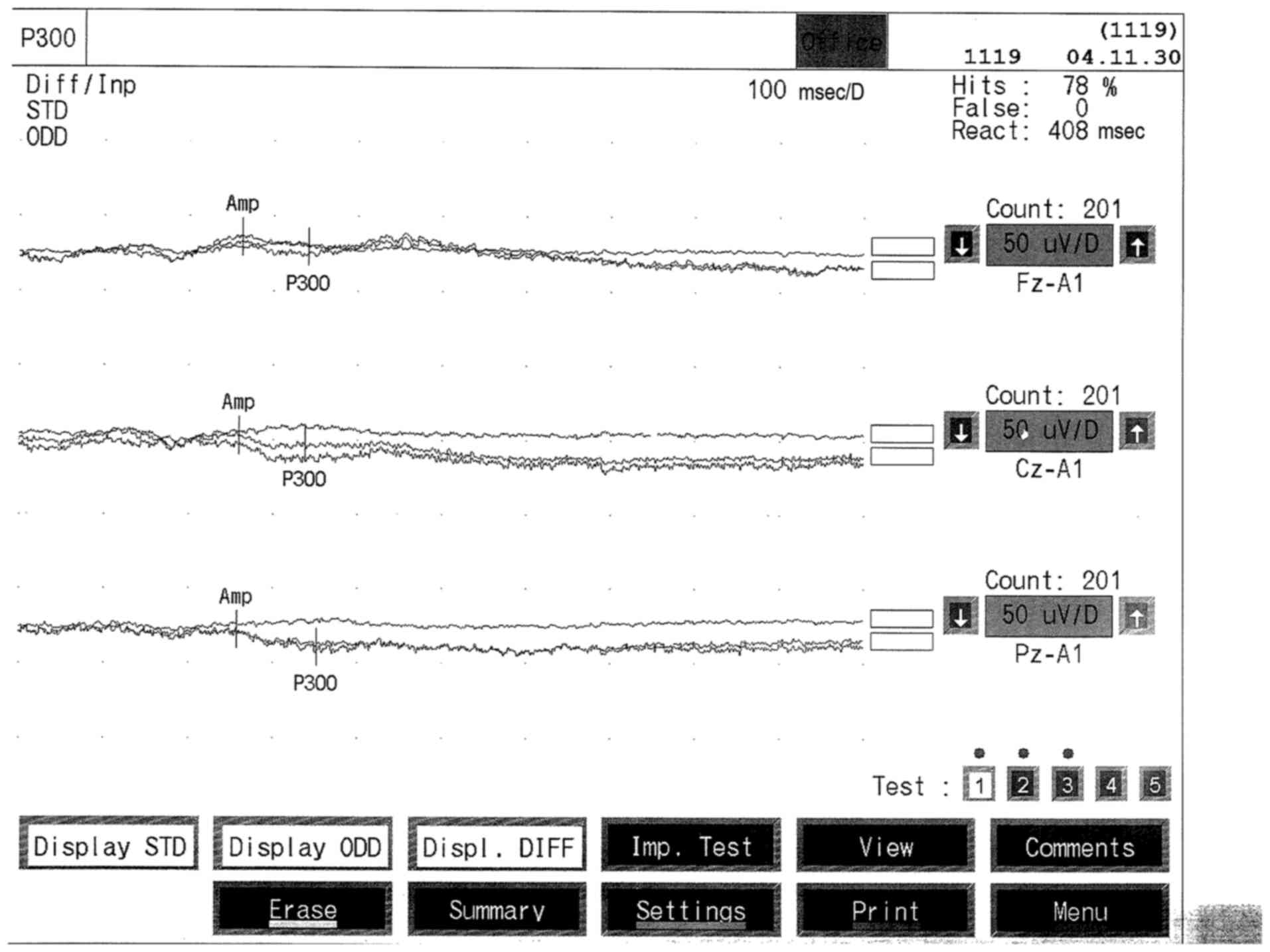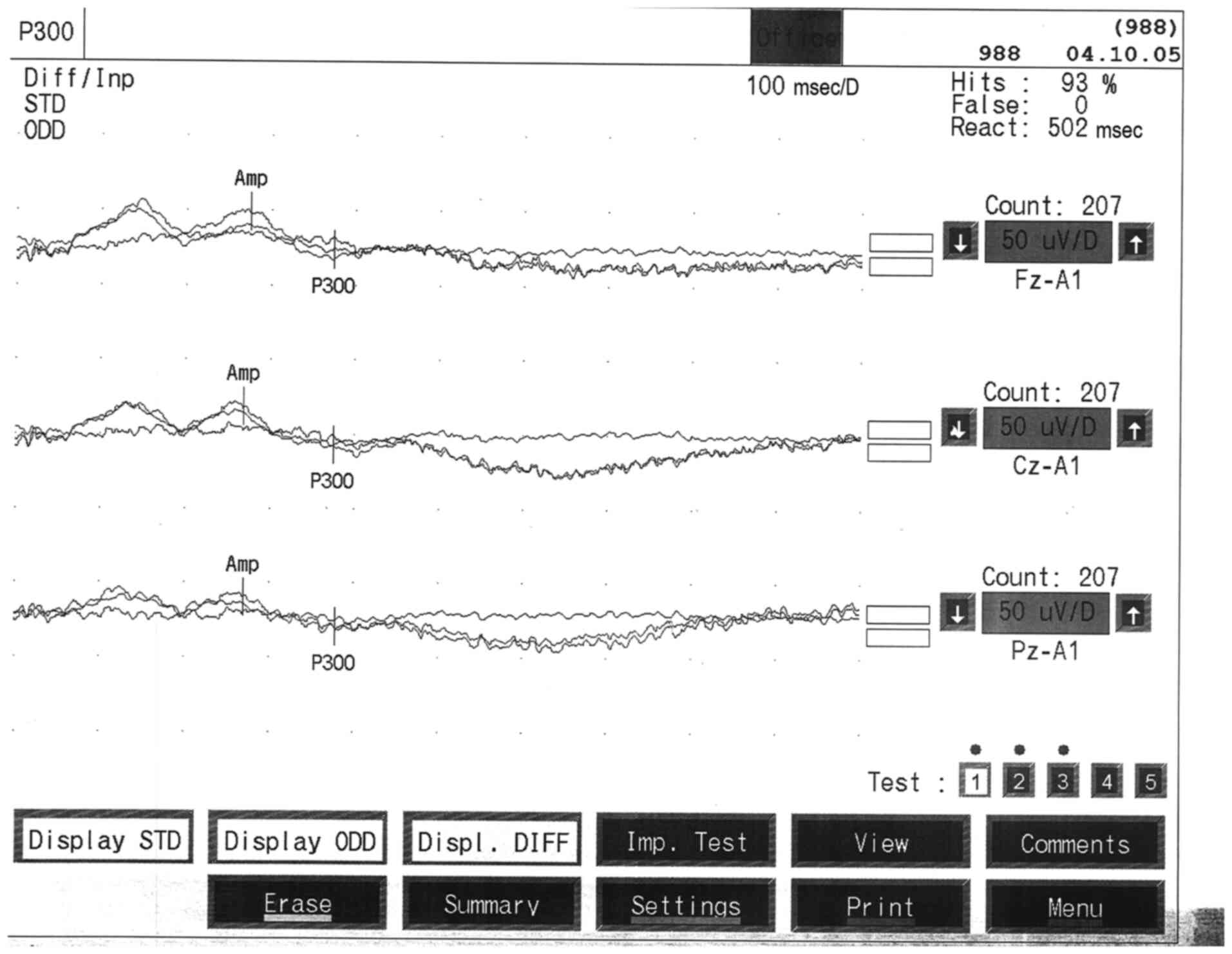|
1
|
Howlader N, Noone AM, Krapcho M, Miller D,
Brest A, Yu M, Ruhl J, Tatalovich Z, Mariotto A, Lewis DR, et al:
SEER Cancer Statistics Review, 1975-2016. National Cancer
Institute, Bethesda, MD, 2019. https://seer.cancer.gov/csr/1975_2016/. Accessed
October 28, 2019.
|
|
2
|
Czogała M, Balwierz W, Sztefko K and
Rogatko I: Antithrombin III as the indicator of L-asparaginase
activity in children treated for acute lymphoblastic leukemia. J
Pediatr Hematol Oncol. 39:114–120. 2017.PubMed/NCBI View Article : Google Scholar
|
|
3
|
Mrdjanović J, Šolajić S, Srđenović-Čonić
B, Bogdanović V, Dea KJ, Kladar N and Jurišić V: The oxidative
stress parameters as useful tools in evaluating the DNA damage and
changes in the complete blood count in hospital workers exposed to
low doses of antineoplastic drugs and ionizing radiation. Int J
Environ Res Public Health. 18(8445)2021.PubMed/NCBI View Article : Google Scholar
|
|
4
|
Pearlstein RD, Whitten C and Haerich P:
Assessing neurocognitive dysfunction in cranial radiotherapy: Can
cognitive event-related potentials help? Technol Cancer Res Treat.
5:109–125. 2006.PubMed/NCBI View Article : Google Scholar
|
|
5
|
Ball WS Jr, Prenger EC and Ballard ET:
Neurotoxicity of radio/chemotherapy in children: Pathologic and MR
correlation. AJNR Am J Neuroradiol. 13:761–776. 1992.PubMed/NCBI
|
|
6
|
Vezmar S, Becker A, Bode U and Jaehde U:
Biochemical and clinical aspects of methotrexate neurotoxicity.
Chemotherapy. 49:92–104. 2003.PubMed/NCBI View Article : Google Scholar
|
|
7
|
Kahkonen M, Harila-Saari A, Metsahonkala
L, Korhonen T, Norvasuo-Heilä MK, Utriainen T, Ahonen A, Bergman J,
Salmi TT and Minn H: Cerebral blood flow and glucose metabolism in
long-term survivors of childhood acute lymphoblastic leukaemia. Eur
J Cancer. 35:1102–1108. 1999.PubMed/NCBI View Article : Google Scholar
|
|
8
|
Jurisic V, Radenkovic S and Konjevic G:
The actual role of LDH as tumor marker, biochemical and clinical
aspects. Adv Exp Med Biol. 867:115–124. 2015.PubMed/NCBI View Article : Google Scholar
|
|
9
|
Kwiecinska K, Zakrzewska Z, Strojny W,
Cwiklinska M, Balwierz W and Skoczen S: Extended follow-up of
children with high-risk acute lymphoblastic leukemia treated with
American and European Protocols-A clash of different ideas. Clin
Oncol. 5(1759)2020.
|
|
10
|
Goodin D, Desmedt J, Maurer K and Nuwer
MR: IFCN recommended standards for long latency auditory
event-related potentials. Report of an IFCN committee.
International federation of clinical neurophysiology.
Electroencephalogr Clin Neurophysiol. 91:18–20. 1994.PubMed/NCBI View Article : Google Scholar
|
|
11
|
Halgren E, Marinkovic K and Chauvel P:
Generators of the late cognitive potentials in auditory and visual
oddball tasks. Electroencephalogr Clin Neurophysiol. 106:156–164.
1998.PubMed/NCBI View Article : Google Scholar
|
|
12
|
Meador KJ, Hammond EJ, Loring DW, Allen M,
Bowers D and Heilman KM: Cognitive evoked potentials and disorders
of recent memory. Neurology. 37:526–529. 1987.PubMed/NCBI View Article : Google Scholar
|
|
13
|
Brace KM, Lee WW, Cole PD and Sussman ES:
Childhood leukemia survivors exhibit deficiencies in sensory and
cognitive processes, as reflected by event-related brain potentials
after completion of curative chemotherapy: A preliminary
investigation. J Clin Exp Neuropsychol. 41:814–831. 2019.PubMed/NCBI View Article : Google Scholar
|
|
14
|
Cousens P, Waters B, Said J and Stevens M:
Cognitive effects of cranial irradiation in leukaemia: A survey and
meta-analysis. J Child Psychol Psychiatry. 29:839–852.
1988.PubMed/NCBI View Article : Google Scholar
|
|
15
|
Campbell LK, Scaduto M, Sharp W, Dufton L,
Van Slyke D, Whitlock JA and Compas B: A meta-analysis of the
neurocognitive sequelae of treatment for childhood acute
lymphocytic leukemia. Pediatr Blood Cancer. 49:65–73.
2007.PubMed/NCBI View Article : Google Scholar
|
|
16
|
Peterson CC, Johnson CE, Ramirez LY,
Huestis S, Pai AL, Demaree HA and Drotar D: A meta-analysis of the
neuropsychological sequelae of chemotherapy-only treatment for
pediatric acute lymphoblastic leukemia. Pediatr Blood Cancer.
51:99–104. 2008.PubMed/NCBI View Article : Google Scholar
|
|
17
|
Krull KR, Cheung YT, Liu W, Fellah S,
Reddick WE, Brinkman TM, Kimberg C, Ogg R, Srivastava D, Pui CH, et
al: Chemotherapy pharmacodynamics and neuroimaging and
neurocognitive outcomes in long-term survivors of childhood acute
lymphoblastic leukemia. J Clin Oncol. 34:2644–2653. 2016.PubMed/NCBI View Article : Google Scholar
|
|
18
|
American Academy of Pediatrics Section on
Hematology/Oncology Children's Oncology Group. Long-term follow-up
care for pediatric cancer survivors. Pediatrics. 123:906–915.
2009.PubMed/NCBI View Article : Google Scholar
|
|
19
|
Ueberall MA, Skirl G, Strassburg HM,
Wenzel D, Hertzberg H, Langer T, Meier W, Berger-Jones K, Huk WJ,
Korinthenberg R and Beck JD: Neurophysiological findings in
long-term survivors of acute lymphoblastic leukaemia in childhood
treated with the BFM protocol 81 SR-A/B. Eur J Pediatr.
156:727–733. 1997.PubMed/NCBI View Article : Google Scholar
|
|
20
|
Lähteenmäki PM, Holopainen I, Krause CM,
Helenius H, Salmi TT and Heikki LA: Cognitive functions of
adolescent childhood cancer survivors assessed by event-related
potentials. Med Pediatr Oncol. 36:442–450. 2001.PubMed/NCBI View
Article : Google Scholar
|
|
21
|
Sur S and Sinha VK: Event-related
potential: An overview. Ind Psychiatry J. 18:70–73. 2009.PubMed/NCBI View Article : Google Scholar
|
|
22
|
Vecchio F and Määttä S: The use of
auditory event-related potentials in Alzheimer's disease diagnosis.
Int J Alzheimers Dis. 2011(653173)2011.PubMed/NCBI View Article : Google Scholar
|
|
23
|
Uberall MA, Haupt K, Meier W, Hertzberg H,
Beck JD and Wenzel D: P300 abnormalities in long-time survivors of
acute lymphoblastic leukemia in childhood-side effects of CNS
prophylaxis? Neuropediatrics. 27:130–135. 1996.PubMed/NCBI View Article : Google Scholar
|
|
24
|
Sato T, Miyao M, Muchi H, Gunji Y, Iizuka
A and Yanagisawa M: P300 as indicator of effects of prophylactic
cranial radiation. Pediatr Neurol. 8:130–132. 1992.PubMed/NCBI View Article : Google Scholar
|
|
25
|
Moore BD III, Copeland DR, Ried H and Levy
B: Neurophysiological basis of cognitive deficits in long-term
survivors of childhood cancer. Arch Neurol. 49:809–817.
1992.PubMed/NCBI View Article : Google Scholar
|
|
26
|
Järvelä LS, Hurme S, Holopainen IE, Leino
M, Hatanpää AM, Mikola H, Kärki T, Salmi TT and Lähteenmäki PM:
Auditory event related potentials as tools to reveal cognitive late
effects in childhood cancer patients. Clin Neurophysiol. 122:62–72.
2011.PubMed/NCBI View Article : Google Scholar
|
|
27
|
Tikhonravov D, Neuvonen T, Pertovaara A,
Savioja K, Ruusuvirta T, Näätänen R and Carlson S: Effects of an
NMDA-receptor antagonist MK-801 on an MMN-like response recorded in
anesthetized rats. Brain Res. 1203:97–102. 2008.PubMed/NCBI View Article : Google Scholar
|
|
28
|
Cole PD, Vijayanathan V, Ali NF, Wagshul
ME, Tanenbaum EJ, Price J, Dalal V and Gulinello ME: Memantine
protects rats treated with intrathecal methotrexate from developing
spatial memory deficits. Clin Cancer Res. 19:4446–4454.
2013.PubMed/NCBI View Article : Google Scholar
|
|
29
|
Brown PD, Pugh S, Laack NN, Wefel JS,
Khuntia D, Meyers C, Choucair A, Fox S, Suh JH, Roberge D, et al:
Memantine for the prevention of cognitive dysfunction in patients
receiving whole-brain radiotherapy: A randomized, double-blind,
placebo-controlled trial. Neuro Oncol. 15:1429–1437.
2013.PubMed/NCBI View Article : Google Scholar
|
|
30
|
Cole PD, Finkelstein Y, Stevenson KE,
Blonquist TM, Vijayanathan V, Silverman LB, Neuberg DS, Sallan SE,
Robaey P and Waber DP: Polymorphisms in genes related to oxidative
stress are associated with inferior cognitive function after
therapy for childhood acute lymphoblastic leukemia. J Clin Oncol.
33:2205–2211. 2015.PubMed/NCBI View Article : Google Scholar
|


















